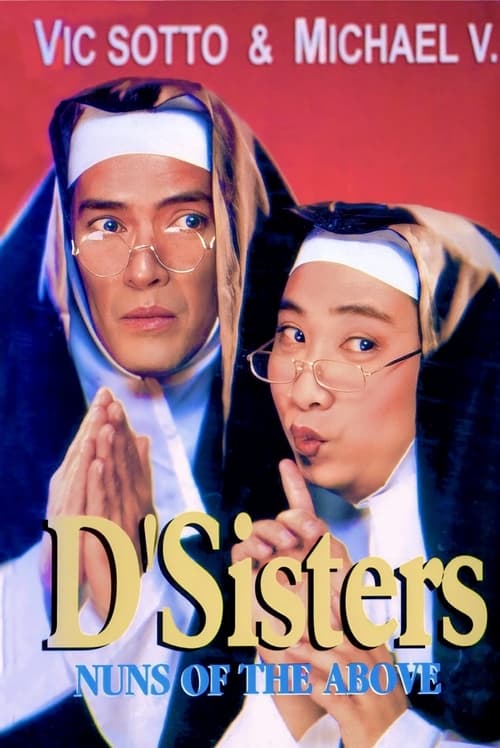
Ask Your Own Question
What is the plot?
What is the ending?
In the ending of "D'Sisters: Nuns of the Above," the main characters confront their pasts and the choices they have made. They find a way to reconcile their faith with their personal desires, leading to a resolution that allows them to embrace their identities. The film concludes with a sense of unity and acceptance among the sisters, as they come together to support one another in their new paths.
As the final act unfolds, the scene opens in the convent, where the atmosphere is heavy with tension. The sisters gather in the chapel, their faces reflecting a mix of determination and uncertainty. Sister Mary, the leader, stands at the altar, her hands clasped tightly as she addresses the group. She speaks of the importance of embracing their true selves, urging the sisters to let go of the constraints that have held them back. The camera captures the flickering candlelight, casting shadows on their faces, symbolizing the internal struggles they have faced.
Next, the scene shifts to Sister Angela, who has been grappling with her feelings for a former love. In a moment of vulnerability, she steps forward, her voice trembling as she shares her story with the congregation. The other sisters listen intently, their expressions softening as they realize they are not alone in their struggles. Sister Angela's confession serves as a catalyst, prompting others to share their own experiences, creating a powerful moment of solidarity.
As the sisters begin to open up, the atmosphere in the chapel transforms. Laughter and tears intermingle as they recount their pasts, revealing the burdens they have carried for so long. Sister Joan, who has always been the jokester, surprises everyone with a heartfelt admission about her fears of inadequacy. The camera captures the warmth in the room, highlighting the bonds of sisterhood that have formed through shared vulnerability.
The climax of the film occurs when the sisters decide to take a leap of faith. They gather in the courtyard, where they have a heartfelt discussion about their futures. Each sister expresses her desire to pursue her passions outside the convent, whether it be art, music, or community service. The scene is filled with emotion as they realize that their faith does not have to be confined to the walls of the convent. They embrace one another, tears of joy streaming down their faces, symbolizing their newfound freedom.
In the final moments, the sisters stand together, hand in hand, as they face the horizon. The sun sets behind them, casting a golden glow that signifies hope and new beginnings. Sister Mary delivers a final message about love and acceptance, reinforcing the film's central theme of embracing one's true self. The camera pans out, capturing the sisters as they walk away from the convent, ready to embark on their individual journeys.
As the credits roll, viewers are left with a sense of closure for each character. Sister Mary takes on a leadership role in a community outreach program, using her organizational skills to help those in need. Sister Angela reconnects with her past love, exploring a relationship that had once been abandoned. Sister Joan pursues her passion for music, performing at local venues and bringing joy to others. Each sister finds her own path, united by the strength of their sisterhood and the acceptance of their true selves. The film ends on a hopeful note, emphasizing the importance of authenticity and the power of community.
Is there a post-credit scene?
The movie "D'Sisters: Nuns of the Above," produced in 1999, does not feature a post-credit scene. The film concludes its narrative without any additional scenes or content after the credits roll. The story wraps up with the characters reflecting on their journey and the lessons they've learned, providing a sense of closure to the audience.
What challenges do the nuns face in their mission throughout the film?
The nuns face various challenges, including skepticism from the community, internal conflicts among themselves, and the need to adapt to modern societal issues while maintaining their faith and values.
How do the characters of Sister Mary and Sister Angela differ in their approaches to their mission?
Sister Mary is more traditional and focused on the spiritual aspects of their mission, while Sister Angela is pragmatic and seeks to engage with the community in a more modern, relatable way, leading to tension between them.
What role does the character of Father Dominic play in the story?
Father Dominic serves as a mentor and guide for the nuns, providing them with support and encouragement, but he also faces his own struggles with faith and the challenges of the church.
How does the relationship between the nuns evolve throughout the film?
The relationship between the nuns evolves from initial rivalry and misunderstandings to a deep bond of sisterhood as they face challenges together, learning to appreciate each other's strengths and differences.
What specific event leads to a turning point for the nuns in their mission?
A significant event occurs when the nuns organize a community outreach program that unexpectedly brings the community together, showcasing their impact and solidifying their purpose, which serves as a turning point in their mission.
Is this family friendly?
"D'Sisters: Nuns of the Above," produced in 1999, is a comedy that features themes and humor that may not be suitable for all audiences, particularly children or sensitive viewers. Here are some potentially objectionable or upsetting aspects:
-
Religious Satire: The film employs humor that satirizes religious practices and beliefs, which may be uncomfortable for some viewers, especially those with strong religious convictions.
-
Mature Themes: There are references to adult situations and relationships that may not be appropriate for younger audiences.
-
Language: The dialogue includes some mild profanity and suggestive language that could be considered inappropriate for children.
-
Physical Comedy: Some scenes involve slapstick humor that may be perceived as excessive or crude, which could be upsetting to sensitive viewers.
-
Character Conflicts: The film features interpersonal conflicts and misunderstandings among characters that may evoke emotional responses, particularly in scenes of tension or confrontation.
Overall, while the film is a comedy, its content may not be suitable for all family members, particularly younger children or those who are sensitive to religious or mature themes.




















